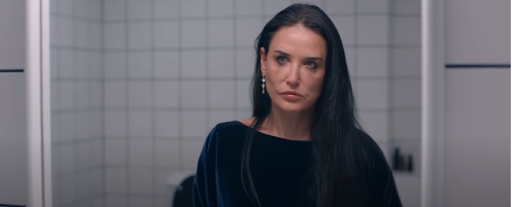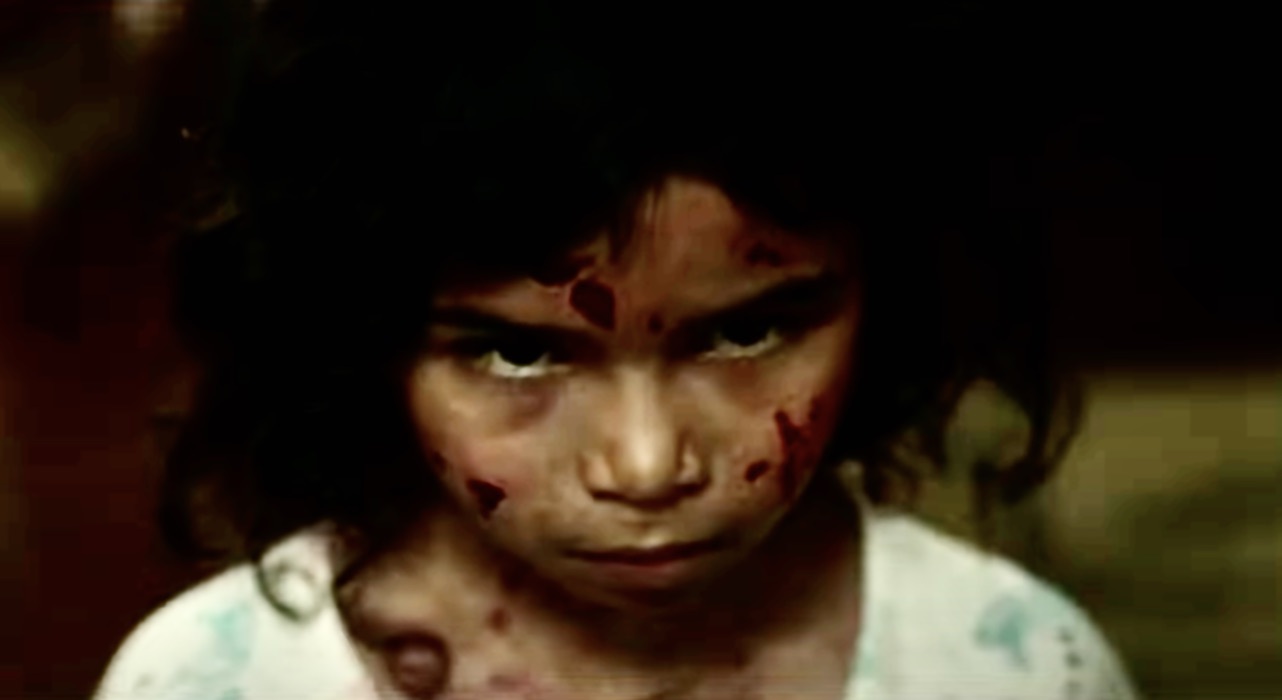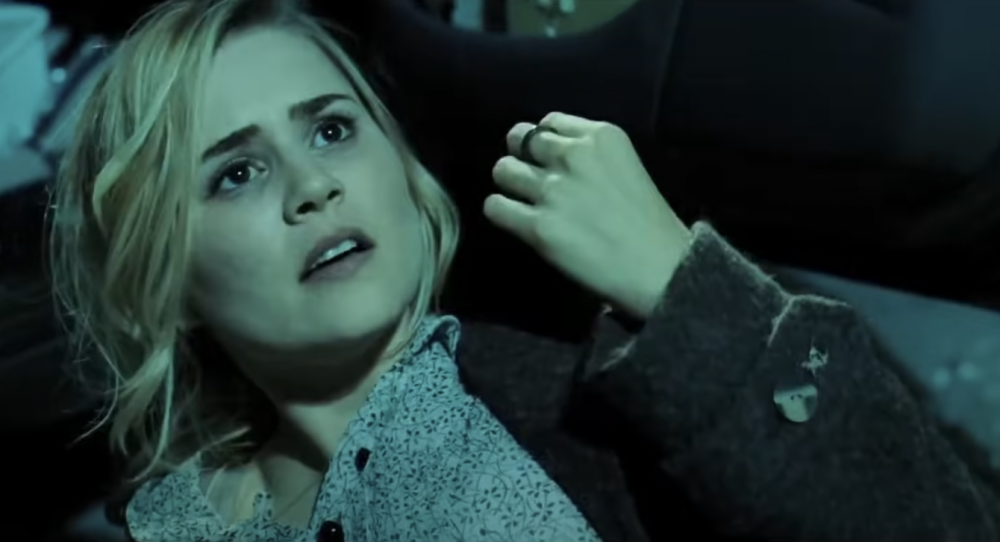Books & Culture
“A Clockwork Orange” Made Me Long to Be a Monster, But It Only Saw Me as a Victim
The book and film pit sexual repression against sexual monstrosity, but leave no room for women in either

Electric Lit is just $4,000 away from our year-end fundraising goal of $35,000! We need to hit this target to get us through the rest of 2025, and balance the budget for 2026. Please give today! DONATE NOW.
Let me crack open a time capsule for you: it’s 2001 and I, a Catholic, 16-year-old high school dropout, have just walked to Blockbuster in my billowing JNCOs to rent a VHS tape of A Clockwork Orange. I will watch the film on the upstairs TV while Fox News blares on the downstairs TV. I am unaware of the fact that the movie received a “C” rating (for condemned) from the National Catholic Office for Motion Pictures, which means I’m committing a mortal sin by watching it—and because I don’t know, I won’t mention it when I go to confession.
Something else I don’t know at this time: on the other side of the country, The Boston Globe is investigating the systematic cover-up of child sexual abuse by Catholic priests. Their bombshell report will spark similar investigations all over the world, and one of the findings of these reports will be the fact that previously, the Church’s system for dealing with pedophile priests was to quietly send them off to addiction rehab centers before reassigning them, because that’s what Church hierarchy believed sexual abuse to be: sexual addiction. It wasn’t abuse and trauma; it was out-of-control desire and a failure of willpower. This general narrative isn’t unfamiliar to anyone who’s grown up going to confession, where you’re told that you were born with original sin and you’re doomed to spend your whole life in a Sisyphean fight against your monstrous nature. You’re going to slip up, and that’s okay—that’s what confession is for. You start over with a clean slate and get back up on that horse and try to be better (or try not to be a sexual predator anymore).
But, for me, The Boston Globe report will uncover more than the Church’s refusal to protect children. It will erode my religious narrative of sexuality as a struggle between repressive will power and monstrous desire—a narrative that presupposes sexual violence as an inevitability. It’s this narrative that A Clockwork Orange will invert but not destabilize when I watch it on its 30th anniversary.
Given the choice between sexual repression and sexual monstrosity, Alex chose to be the monster.
This year marks the movie’s 50th anniversary, and when I watched it 20 years ago, I did so with no awareness of the fact that I’d spent my whole life steeping in the conservative Catholic language of monstrous sexuality. I was dazzled by the surrealist interplay of lighting and music, the alternating wooden and over-the-top performances, and the incomprehensible teen slang that was both playful and dangerous. More than anything, I was dazzled by Alex. Who was this dark, complicated boy for whom Beethoven and sexual violence came together as a synesthetic high art? In the language of destructive sexuality, Alex was someone who wasn’t trying to rein in his desire. His violence wasn’t a failure of self-control; it was an abandonment of any pretense of restraint. Given the choice between sexual repression and sexual monstrosity, he chose to be the monster.
Around this time I was also chatting with adult men on AIM and ICQ. I’d been receiving messages from men since I was 14 and I thought that it was because they’d read my profile and found in me an intellectual equal. I even had a running joke with them: when they told me how old they were (34/m, 36/m, 39/m), I said, “you’re the same age as my mom,” regardless of what number they gave me. It was important that I address the elephant in the room, which allowed me to believe they wanted to talk to me because I was clever. They sent me pictures of themselves. Some weren’t bad looking, but there was the occasional horror movie sequence of a slow-loading picture revealing first a shining bald scalp, followed by gray eyebrows, and finally bearded jowls. Sometimes they asked me for pictures of myself, but I didn’t have any because I didn’t have access to a scanner. There was the occasional request to “cyber,” for which I was always game. (I never thought of this as a breach of the purity pledge I signed in my catechism class when I was 13 because it wasn’t real sex, so I never mentioned it in confession.) The chats gave me a secret backchannel through which to explore sex, desire, and power. When the men pursued me despite my joke about them being the same age as my mother, it fulfilled the narrative I’d contrived of a failure of willpower in the face of monstrous desire: unable to control their desire, they became monstrous. I reveled in the power this afforded me while identifying with the men who had failed to stay on the path of righteousness.
A Clockwork Orange offered an alternative narrative. Instead of a failure of self-control, there was agency: a choice to be monstrous. In identifying with the men I talked to online, I also identified with the frustration of trying and failing to be good. The concept of choosing to be bad was exhilarating, and I read the book along with every scrap of trivia I could find. I learned that the author, Anthony Burgess, had also grown up Catholic and was an extreme political conservative who fled the U.K. to avoid paying taxes on his considerable wealth. For Burgess, the story of Alex and the post-capitalist Russo-British near future was a story of the State versus free will. As he explained in a 1986 introduction to the novel:
By definition, a human being is endowed with free will. He can use this to choose between good and evil. If he can only perform good or only perform evil, then he is a clockwork orange—meaning that he has the appearance of an organism lovely with color and juice but is in fact only a clockwork toy to be wound up by God or the Devil or (since this is increasingly replacing both) the Almighty State. It is as inhuman to be totally good as it is to be totally evil. The important thing is moral choice.
Stanley Kubrick’s summary of his film adaptation was less focused on the moral implications of the story, but rather the political implications; he explained it as “a social satire dealing with the question of whether behavioral psychology and psychological conditioning are dangerous new weapons for a totalitarian government to use to impose vast controls on its citizens and turn them into little more than robots.” Is it? Watching the movie, one might notice the directorial choice to center the straightjacket and eye prongs as the true dystopian horror—the image of tears running down Alex’s cheeks while wires and electrodes spill out of the halo on his head foregrounded as the real violence of the story. But this is after we’ve just watched several grisly yet playful and balletic scenes of sexual violence—the implication being that the suffering of Alex’s victims is bad, but the suffering he endures at the hands of the State is worse. The question Burgess pursues, and Kubrick underlines, throughout the story is whether a person (specifically, a man) can be truly “good” if he has no choice. In other words: the individual soul’s journey to moral righteousness is more important than a functioning society where women can live free from sexual violence. Art factors into this equation as well, as the aversion therapy that Alex endures, the Ludovico Technique (Ludovico being Italianate for Ludwig), is underscored by the music of Beethoven. In killing his violent compulsions, the State also kills Alex’s artistic compulsions. The argument Burgess and Kubrick seem to be making, then, is that women’s suffering is necessary for both the moral and artistic triumph of men’s souls.
The argument Burgess and Kubrick seem to be making is that women’s suffering is necessary for the moral and artistic triumph of men’s souls.
I sensed dishonesty in the centering of the straitjacket and eye prongs the first time I watched the movie. If Kubrick was going to ask me to revel with him in the playful scenes of violence against women, I didn’t see how he could then ask me to be horrified by the State’s violence. But I understood fear of the State as I read the novel with the ambient chatter of Fox News in the background. As in A Clockwork Orange, the narrative on Fox News, as I understood it then and as I understand it today, was that the State was the enemy; collectivism was the enemy; pro-social policy (from the diaphragm: socialism!) was the enemy. I was already primed for the zero-sum world of A Clockwork Orange before I started writing fanfic about the fourth droog (a girl—me—obviously). In draft after draft, I crafted a world in which a girl could be chosen to join in the ultraviolence because she wasn’t like other girls. I wrote within the same zero-sum logic in which Alex goes directly from perpetrator of violence to victim of violence, with nothing in between—because in his world and mine, there was no third option. It was the same zero-sum logic in which I understood a dollar for one person was a dollar out of another person’s pocket; in which good was equaled and opposed by evil; in which I could be the target of predatory men online or I could get in on the joke.
The year after I rented A Clockwork Orange for the first time, my best friend’s mom found out that her husband was having sexually explicit chats with teenage girls on the Internet. They got a divorce, and I stopped responding to messages from men. That might have been the moment I realized I had never been in on the joke. Or maybe it was the following year, when my 65-year-old boss started sexually harassing me on the day of my 18th birthday. Or maybe it was the day a man followed me home from work. Or the day a man followed me in a cemetery and raged when I asked him to leave me alone. At some point along the way, it became clear that I could never be the fourth droog. In the epic battle between good and evil for the fate of the soul, I had never been the soul in question; I had always been the stumbling block on someone else’s journey.
I don’t know if A Clockwork Orange would’ve appealed to me at all if I hadn’t been ready to recognize the narrative of the struggle between moral control and monstrous sexuality. And I don’t know that I would’ve truly recognized how problematic that narrative was if I hadn’t learned about the Catholic Church’s sexual abuse cover-up, predicated on that very same binary. But both A Clockwork Orange and the sex abuse scandal employed the same intellectual dishonesty that troubled that sexual narrative. In A Clockwork Orange, it was the centering of the straitjacket and the eye prongs as the true violence. In the Catholic sex abuse scandal, it was the treatment of pedophilia as an addiction. In both cases, the implication was that the suffering of the victims was not the focus of the story.
There is a picture on my grandparents’ wall of the beloved family priest who baptized several of their children and grandchildren, myself included. He died in the late ‘80s, but a few years ago my mother learned that he had been accused of molesting a five-year-old girl back in the ‘60s. In the picture on my grandparents’ wall, the priest is sitting on the couch with one of my aunts—six or seven at the time—on his lap. I can look at that picture and imagine what he probably saw: a moral man in control of his monstrousness. The head controlling the heart. The superego controlling the id. I wonder if anyone saw the little girl in danger.








